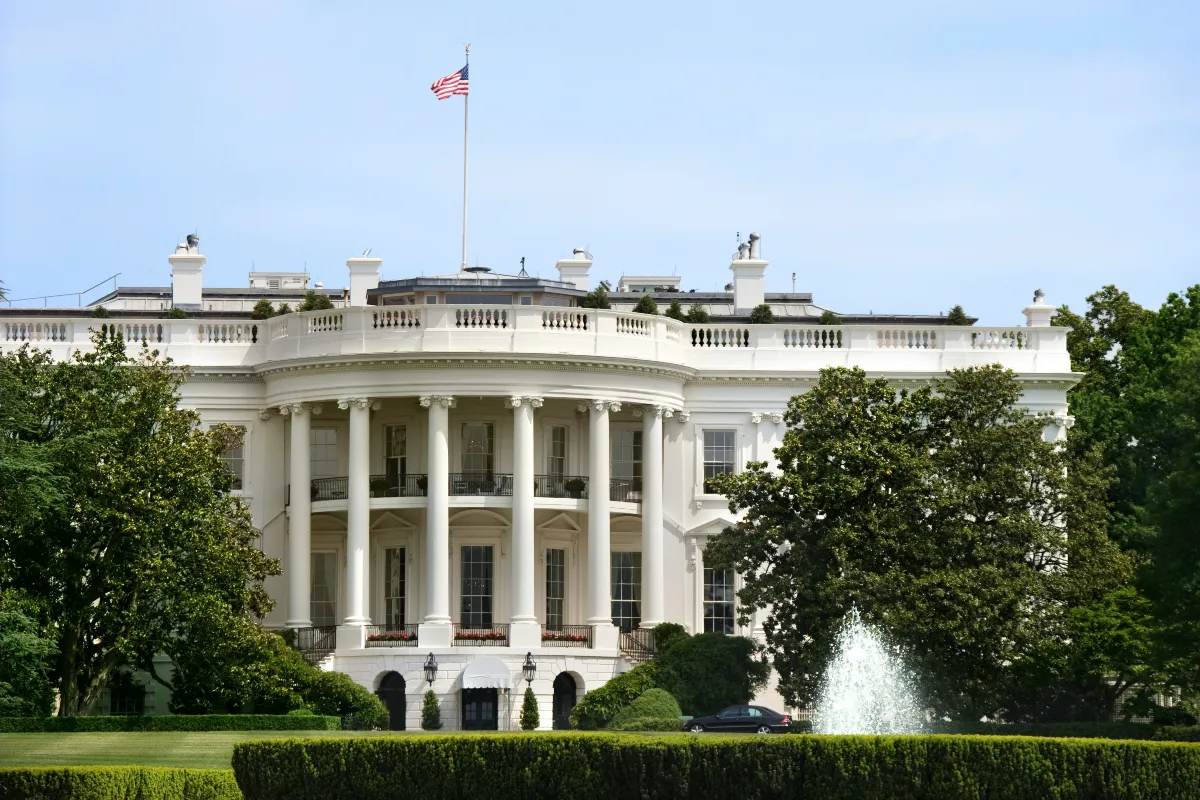The Trump administration’s trade policy threats have whipsawed markets this week. Last-minute deals with Canada and Mexico on Monday postponed a 25% tariff on imports into the U.S., while a 10% increase in tariffs on Chinese goods went into effect Tuesday. Uncertainty about the direction, implementation, and impact of tariffs – including retaliation by targeted countries – has investors on edge.
While we believe the 40-year-old North American free trade bloc ultimately will survive this turmoil, we also would caution investors not to be too sanguine about the Trump administration’s resolve to force changes in global trade and raise additional government revenues. Trump and his allies firmly believe persistent trade imbalances have hurt the U.S. The main focus is China, but other serial trade surplus countries in Europe and Asia – which through industrial policies have altered savings and investment balances in the U.S. and elsewhere – should prepare for more volatility driven by U.S. trade policy.
The tariff hikes on China should be economically manageable for the U.S. However, if broader tariffs are implemented at some point and sustained over a cyclical horizon, we are likely to see a more significant short-run impact on markets and on the U.S. and global economies. There will be winners and losers across regions and sectors. Trump’s willingness to tolerate short-run financial market volatility remains a key factor as trade policy evolves.
While much of the focus has been on the near-term inflationary implications of tariffs, the potential for supply chain disruptions could have meaningful negative growth effects. This complicates the Federal Reserve’s reaction, as it affects both sides of the central bank’s dual mandate (price stability and maximum employment).
Finally, the extent to which tariff revenues are “recycled” back into the U.S. economy is also a key uncertainty. Higher revenues that are not offset with larger personal or corporate tax cuts would tend to improve U.S. government deficits, all else equal, but at the cost of a larger drag on activity in the near term.
Regardless of the actual implementation of tariffs and trade policy, the prevalence of policy uncertainty will likely affect the economies of the U.S. and its trade partners, and beyond.
Here are several key questions for investors:
What has happened so far?
On February 1, the Trump administration unveiled 25% tariffs on Canada and Mexico as well as a 10% tariff rate increase on China (above the 10%–25% tariff already in place). While escalation with China had been widely expected given ongoing tensions, the 25% tariffs on the North American allies surprised many investors, sparking market volatility.
Implementation of these tariffs is uncertain. They were all slated to begin on February 4, but last-minute deals with Mexico’s President Claudia Sheinbaum and Canada’s Prime Minister Justin Trudeau led to a 30-day delay in implementation – meaning investors and political leaders will be watching closely as the new deadline (March 1) looms. The increased tariff rates on Chinese imports went into effect on Tuesday as scheduled.
If fully implemented, the new tariff rates will lift the effective average tariff rates on China, Mexico, and Canada up to approximately 20%–25% total, and raise the average effective tariff rate on all U.S. imports by roughly 8 percentage points – reaching a level not seen since the 1940s. By contrast, tariff actions during Trump’s first term drove a roughly 1 percentage point increase in the average effective tariff rate.
Canada, Mexico, and China all responded to Saturday’s announcement with possible countermeasures, including potentially 25% tariffs on one-third of U.S. imports into Canada, and 15% tariffs on around $15 billion of U.S. exports to China.
The Trump administration has also suggested more tariffs may be coming. For example, NATO requirements for defense spending is a potential impetus for (as yet unannounced) potential tariffs on the European Union. April 1 may be an inflection point; it’s the deadline stipulated in Saturday’s announcement for several trade deliverables – details that may offer a roadmap for future U.S. trade actions, including the possibility of a universal tariff.
Why the initial focus on Canada and Mexico?
The Trump administration underscored border security, immigration, and drug flows as key issues underlying the tariff actions. That said, Trump and his advisors have long argued that tariffs effectively correct trade imbalances and raise government revenues.
The Trump team also seems keen to accelerate the review of the existing U.S.–Mexico–Canada Agreement (USMCA) – enacted during his first term – and will likely focus on a few key areas: dairy protectionism and the digital sales tax with Canada, and Chinese import content and foreign direct investment with Mexico.
It’s worth noting that the U.S. runs a trade deficit with both Mexico and Canada (neither as large as the trade deficit with China, however). The trade deficit with Canada has been relatively stable, mainly driven by energy flows; excluding energy, the U.S. actually runs a trade surplus with Canada. With Mexico, the U.S. trade deficit has expanded significantly in recent years, potentially reflecting a reorientation of supply chains from China to Mexico for better access to U.S. markets.
How linked are these economies?
U.S. trade with China is largely focused on end-use goods as opposed to trade with Mexico and Canada, which is much more highly integrated along supply chains. Comparing the headline figures, Canada and Mexico account for about 27% of U.S. imports versus China’s roughly 13% concentration. More importantly, the U.S. exports significantly more to Canada and Mexico than to China. In percentage terms, Chinese markets make up around 8% of U.S. exports, while Canada and Mexico account for a much larger 34%.
More important is intra-industry trade (a measure of how frequently parts cross international borders before final product assembly) – here, the U.S. is much more closely tied to Canada and Mexico, meaning tariff rates on Mexico and Canada are likely to be more economically damaging to the U.S. than if those same rates applied to Chinese imports. Nearly 20% of the value of the manufacturing products that the U.S. imports from its USMCA neighbors is actually generated in the U.S., according to OECD data. This contrasts with Chinese imports, which have roughly 2% U.S. content, and a 7% average U.S. content across all U.S. imports. While the newly announced tariffs try to limit charges on the domestic content of imported goods, we believe implementation will be challenging.
Where do China tariffs fit into this?
The 10% additional tariffs on China generated fewer headlines and were less of a surprise to markets. But we believe the China tariffs will be more durable than the others for a few reasons.
First, the U.S. has a broader set of secular geopolitical tensions with China – including Taiwan, trade, intellectual property (IP), and technology – that have made tariffs more politically popular with both sides of the aisle in the U.S.
Second, we expect China tariffs to be less disruptive to U.S. economic activity than tariffs on Canada and Mexico, given the less closely linked supply chains and the relatively limited amount of U.S.-originated content in products that are imported from China.
How might tariffs affect U.S. growth and inflation?
If fully implemented and sustained, the tariffs announced on February 1 could have a significantly larger impact on growth and inflation in the short run than the tariffs from Trump’s first term given the higher levels of supply chain integration between U.S., Canada, and Mexico and the broader scale and scope of the goods affected. The economic impact will also depend on if and how these countries retaliate, the extent to which other government policies support their economies, and how financial markets and currencies respond.
While the outcome is highly uncertain, taking the various factors into account, we estimate these tariffs – if fully implemented – could raise U.S. inflation by 0.8 percentage points and reduce growth by 1.2 points in the first year. For Canada and Mexico, the direct drag on growth is likely to be higher, given their larger reliance on trade.
If just the Chinese tariffs are implemented, the economic effects on the U.S. would likely be much more muted: boosting inflation by roughly 0.2 percentage points, with a similarly sized impact on growth.
In general, we see less scope for U.S. to “recycle” the additional revenue collected from tariffs back into the economy this time versus the first Trump administration, when higher tariffs were paired with lower taxes from the Tax Cuts and Jobs Act (TCJA). With today’s greater focus on government spending cuts, and more limited room for further tax cuts (although we expect a full TCJA extension), the net fiscal impulse to cyclical growth is likely to be muted.
Canada may provide more direct fiscal support to bolster its economy (e.g., sales tax holidays and manufacturing sector supports), while Mexico’s plan to further reduce deficits relative to GDP over the next several years would likely remain in place.
China, which has been reliant on an export-led growth model due to its weak domestic demand and property sector challenges, is likely to continue to ramp up monetary and fiscal programs designed to support its domestic economy.
Finally, currency adjustment – the stronger U.S. dollar in particular – potentially could offset some of the near-term inflationary effects, but at the cost of a larger hit to the U.S. export sector. It’s also worth noting that economic activity to front-run potential tariffs could support growth, while higher policy uncertainty could weigh on hiring and investments.
How might central banks respond?
The new tariffs have potentially offsetting implications for monetary policy. A near-term rise in inflation would tend to delay further interest rate cuts, while the potential drag on activity and labor markets would suggest faster cuts and possibly a lower destination for the policy rate. (For details, see our 8 January 2025 Macro Signposts, “Tariffs, the Dollar, and the Fed: Crucial Decisions in 2025.”)
Overall, we think the combination of still elevated post-pandemic inflation, the strength of the U.S. economy coming into this period, and the offsetting implications of the tariffs for the Fed’s dual mandate will likely keep the Fed on hold for now. Higher uncertainty argues for a slower descent to neutral, and we wouldn’t be surprised to see the Fed holding rates steady throughout the year as it awaits more clarity. However, a more material deterioration in the labor market or in economic activity could prompt the Fed to cut more aggressively. We still believe the odds of the Fed hiking rates from here are relatively low.
The implications for other central banks are clearer. While some retaliation that raises price levels in the affected economies is likely, the drag on economic activity from the rise in global trade uncertainty and the more direct impact from lower trade in surplus economies are likely to be a bigger concern for central bankers. In the event of higher tariffs, we expect the Bank of Canada to focus on supporting growth with faster cuts. For the Bank of Mexico (Banxico), the bias is also likely to cut more quickly, although the speed and magnitude of the currency adjustment will be an important constraint.
Which investment sectors are most affected?
Generally, higher import prices due to the U.S. tariffs would tend to hurt consumers and businesses of the affected products and make the U.S. export sector less competitive. However, government deficits should improve. In the medium term, increased U.S. manufacturing investment and hiring could mitigate the negative domestic effects of tariffs, especially if regulations become more relaxed or efficient.
Autos, food, and commodities sectors in the U.S. would likely feel the most direct impact of the tariffs. Integration is particularly high in the auto sector; some auto parts cross USMCA borders eight times before the finished cars are sold to consumers. Tariffs on energy would likely be quite disruptive, particularly for refineries in the Midwest relying on Canadian oil – this despite the proposed adjustment levying 10% tariffs (instead of 25%) on Canadian energy imports.
What’s the bottom line?
In the end, the latest developments underscore Trump’s eagerness to make good on his campaign promises about “America First” trade and immigration policy. Despite the 30-day reprieve for Mexico and Canada, investors should still expect higher policy uncertainty as the administration threatens other trade partners with higher tariffs. Mexico, Canada, and China are likely the beginning actions for a longer series of threats, higher tariff policies, and possible trade deals.
Overall, we think U.S. trade policy will be focused on China and other serial trade surplus countries, which through industrial policies have altered savings and investment balances in the U.S. and elsewhere (see the 17 December 2024 Macro Signposts, “Will We See Bold Policy Choices in the U.S.?”). While the U.S., Canada and Mexico are still likely to reach a new deal to preserve the 40-year-old North American free trade bloc, the short-run economic (and political) implications of breaking down these integrated supply chains are likely to be costly, and U.S. tariff hikes are likely to be more durable on other trading partners outside USMCA. In other words, countries with serial trade surpluses with the U.S. – China, Europe (especially Germany and Ireland), Japan, Vietnam, etc. – should prepare for more volatility.
How can investors plan for this volatility and other effects of shifting trade policy? As we discussed in our recent Cyclical Outlook, “Uncertainty Is Certain,” given tight starting valuations in U.S. equity and credit markets, risk assets seem to rely increasingly on optimistic scenarios. The markets’ sharp and volatile response to the tariff announcement (and the subsequent – and potentially temporary – reprieve) are further evidence of that reliance on positive outcomes. However, we would argue tail risks for the U.S. economy have increased on both sides of the distribution.
In contrast, bonds present an appealing opportunity in both the near term and over a longer horizon, especially given their elevated starting yields. And bond markets outside the U.S. may benefit further: In the event of U.S.-led disruption to global trade, many central banks are poised to accelerate their cutting cycles, bolstering the case for a diversified bond portfolio. When uncertainty rattles markets, look to fixed income as an anchor – one offering attractive yields today.
By: Tiffany Wilding, Economist, PIMCO






![[uns] house of commons, parliament](https://ifamagazine.com/wp-content/uploads/wordpress-popular-posts/788182-featured-300x200.webp)








